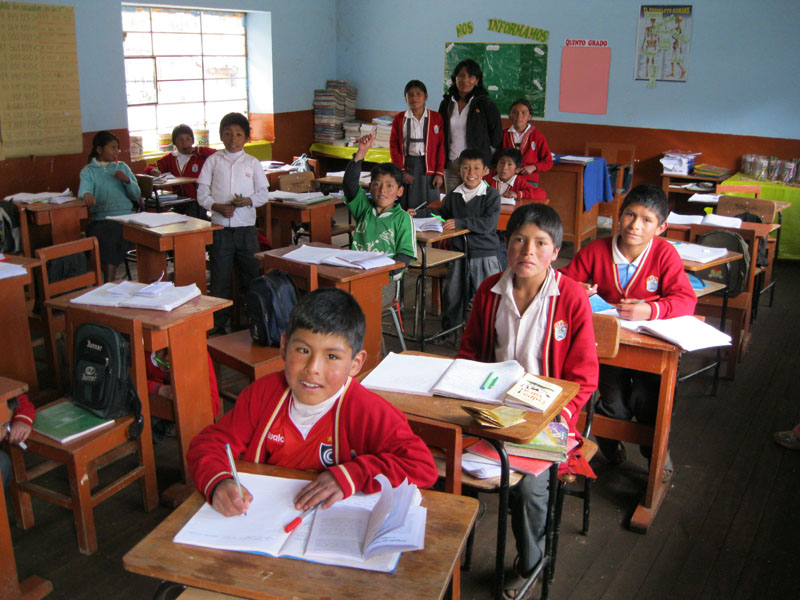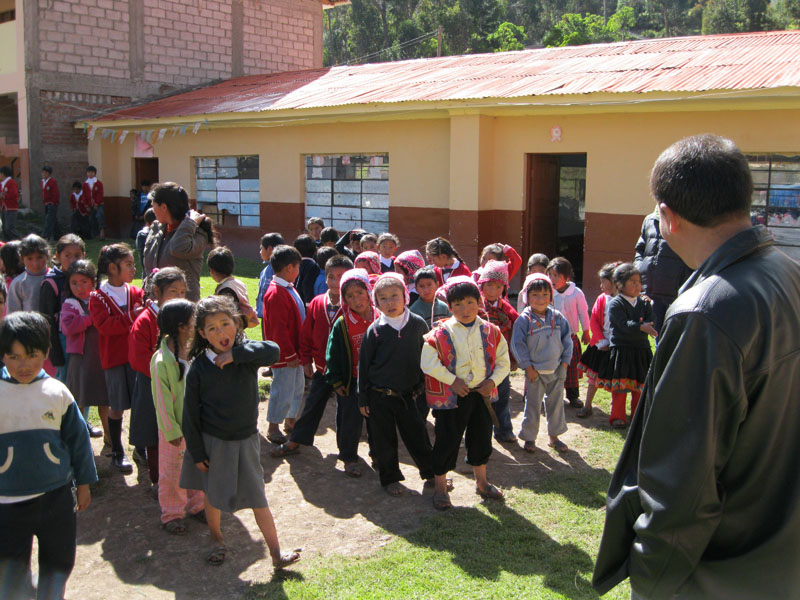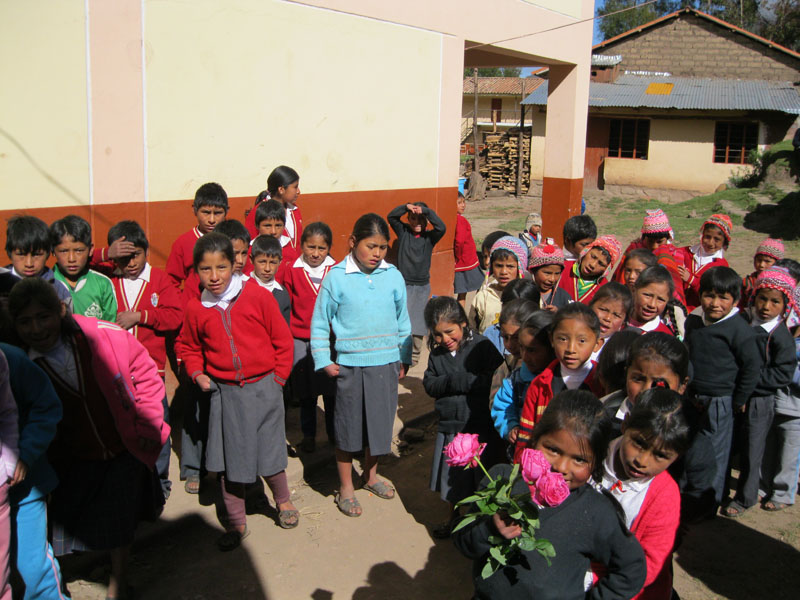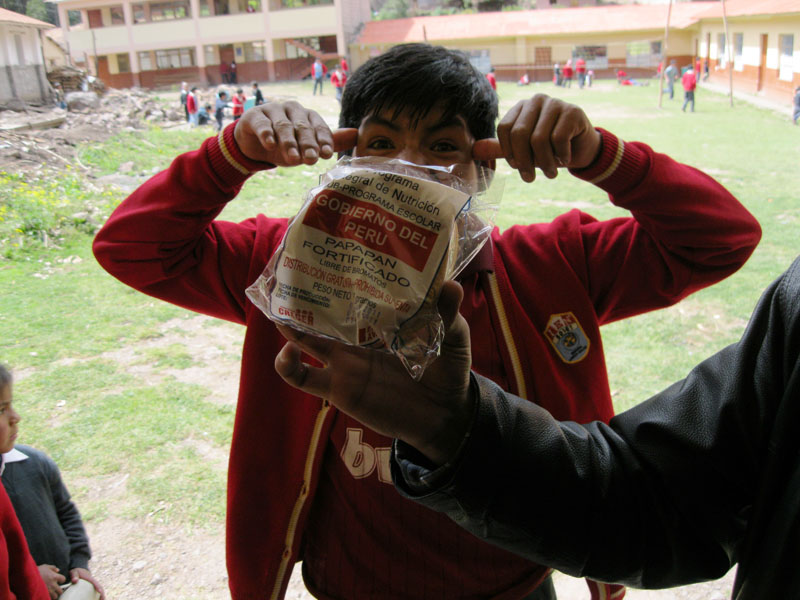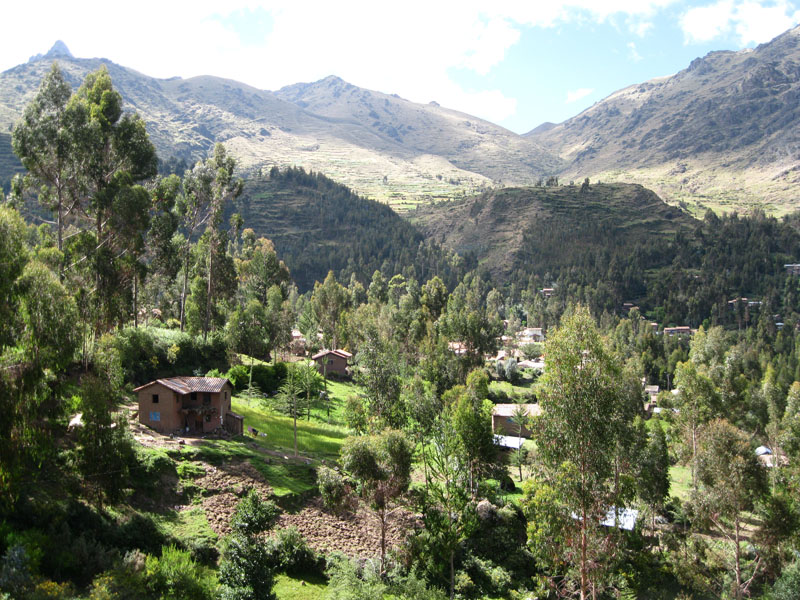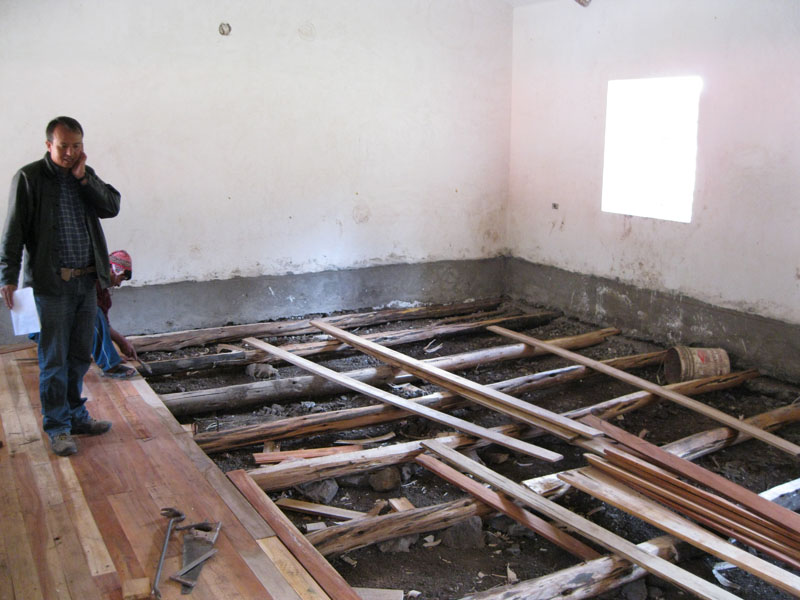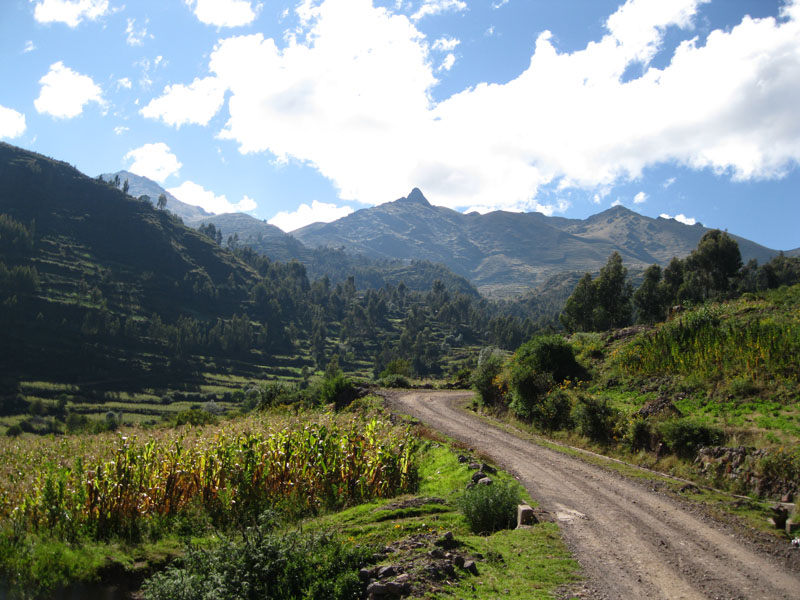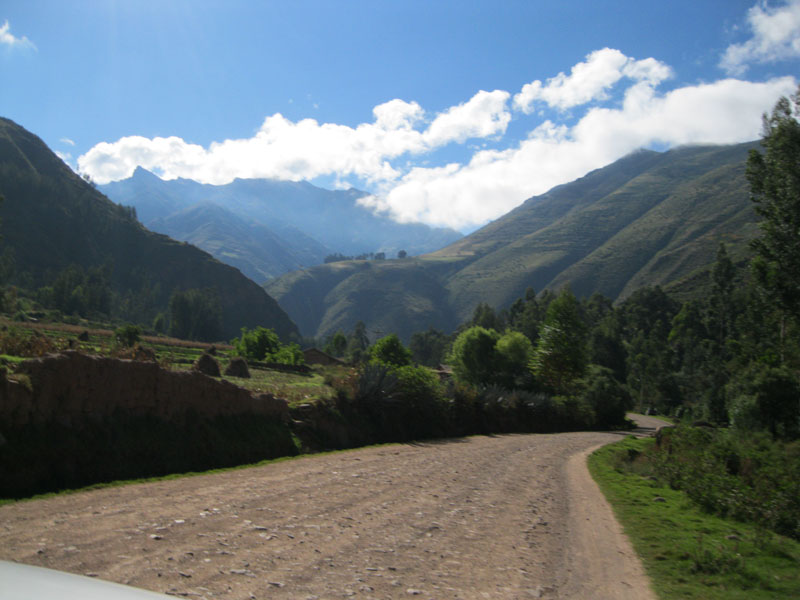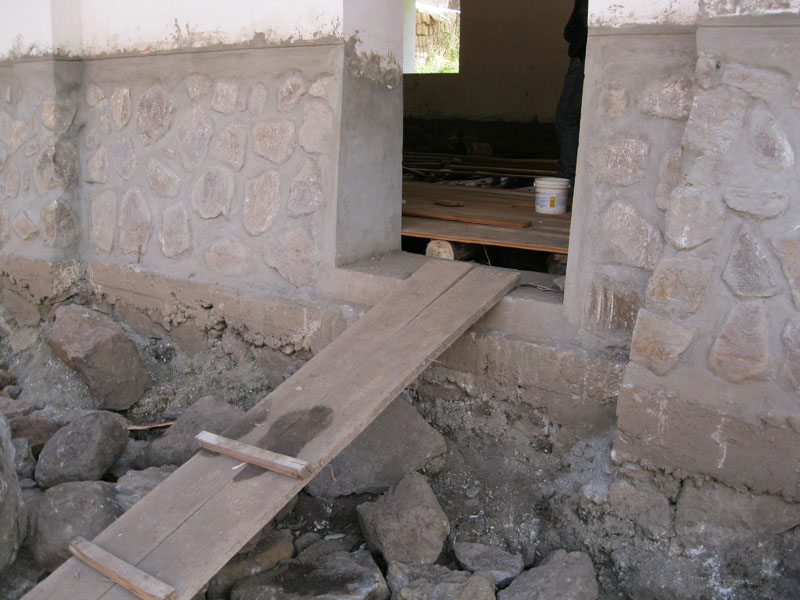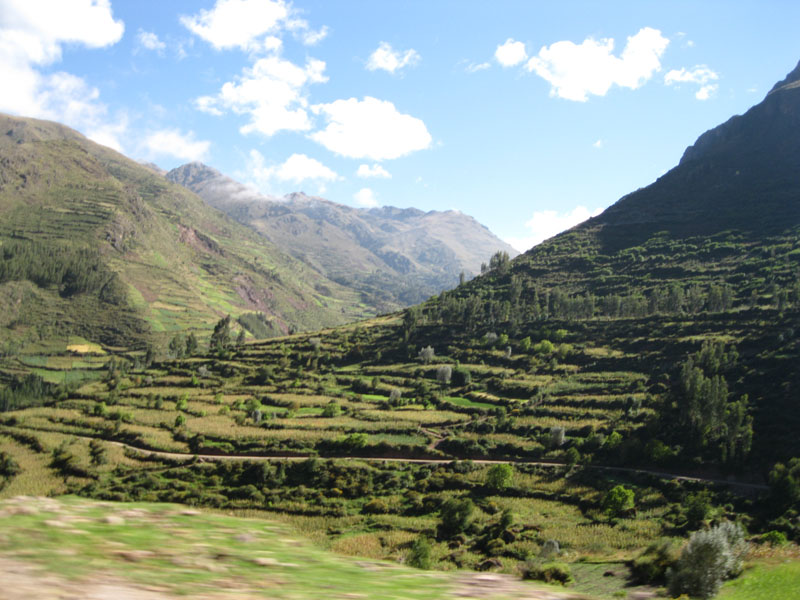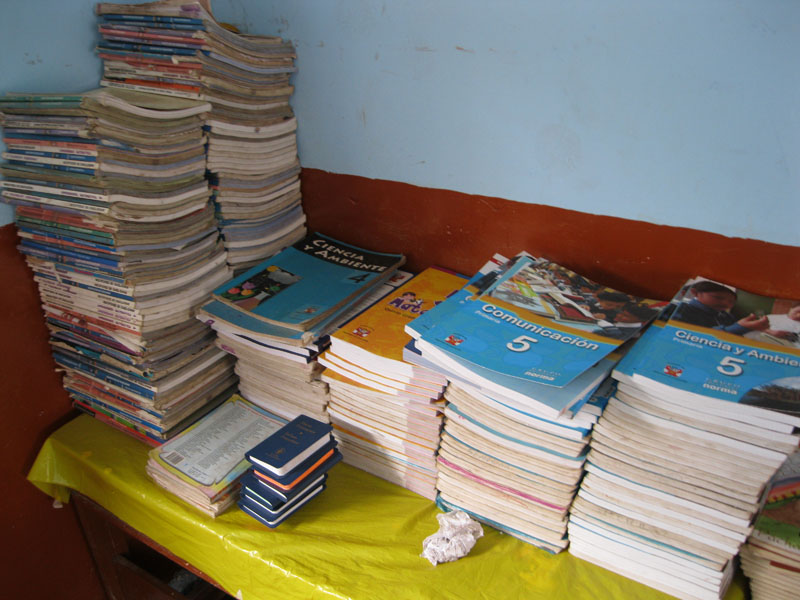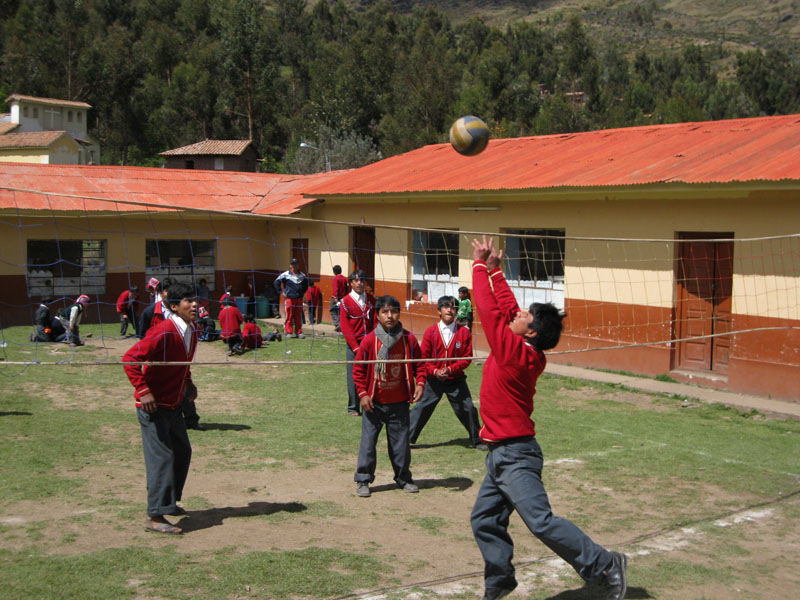by Simon
One of the most important aspects of Aracari’s mission is that we give back to the communities that we visit, and that we make sure that any of our guests who want to donate arrive in the places that need them most. This was the purpose of my visit to the small school of the Huama community in the hills above the Sacred Valley yesterday.
I set out early yesterday morning with the principal of the school, one Richard Velarde, whom we had kindly been put in contact with by our friend Carol from the Willka Tika guesthouse. The journey was stunning, turning towards the hills from the town of Calca and winding up a small valley dirt track for about 40 minutes before reaching the very picturesque community of Huama.
On the journey, Richard told me a little about the Huama school. Since he began working there 5 years ago, he and his colleagues have made committed effort to develop the school’s facilities and to better the opportunities for children in the area. They have seen much success, including the introduction of a secondary school for older children who would have had to walk for several hours to the next nearest school. Many of the kids would have opted out of secondary school altogether before this one was built.
After a delightful welcome from the kids which included a good bout of singing, a bouquet of flowers and a brief introduction to my home country Scotland, Richard gave me a tour of the school. The kids were adorable, smiling and laughing and always interested in the slightest thing I had to tell them. They were particularly fascinated by my camera. I spent the whole day there, peeking into some of the classrooms and trying as best as a 6 foot tall European could not to distract them from their studies. “What do I have to eat to grow as tall as you?” one child asked, while other kids merrily taught me words in Quechua, their native language.
Richard also showed me to the farm land that belonged to the school. Aside from just teaching subjects such as maths and physics, they have developed a curriculum that has the children learning skills vital to their community, such as subsistence farming, traditional forms of cooking and guinea pig rearing.
Despite the wonderful conviction of Richard and his colleagues, he told me there is still much work to be done, and I saw this first hand during my visit.
Firstly, the school lacks writing materials, notebooks and other basic essentials such as textbooks and other materials for learning support. Likewise, such simple additions as new desks and proper bookcases would help enormously for the teachers to organise materials.
Another issue is space. Many of the classrooms have double purposes and must be used for various subjects by a total of 237 children across primary and secondary school. The team are currently building a new classroom, but lack funds for cement to construct a properly functioning and safe entrance area.
Perhaps the most crucial problem is food; the children do not receive nearly adequate nourishment. They eat only a tiny breakfast and their main meal of the day is provided by the school, usually amounts to not much more than milk and government-issue bread, although this is supplemented by food produced on the farm whenever possible and by kind donations.
Of course, in order for there to be further progress in these areas, financial support is essential. We at Aracari are determined to do what we can to support these communities and welcome the donations of our guests to give these projects much needed financial support. Likewise, we want our guests to be able to see the effects of their help and visit the projects that they have supported, and even to bring essential materials for schools such as Huama in person.
If you are interested in visiting the community and school of Huama, then please contact us; we will be doing our best in the coming months to facilitate visits to this and other schools. The more interest shown, the faster we can get this wonderful community the support it needs!!

